Latitude Housing System: Cherepovets, Russia
Invited Sustainable Housing Competition (sponsor: Living Steel / Severstal)
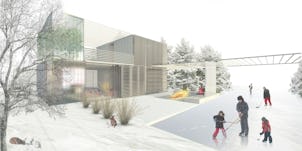
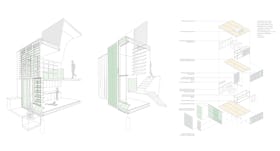
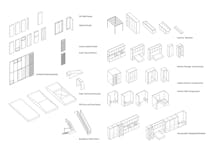
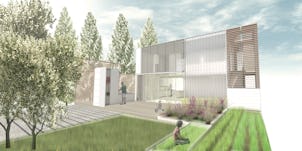
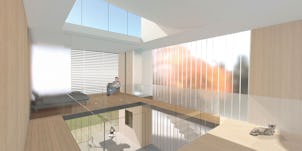
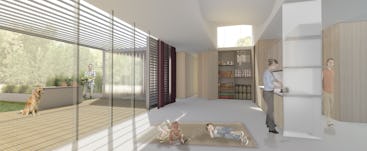
The Latitude Housing System recognizes the radical potential of the single family house to effect massive positive change: it can reduce emissions; it can generate economies; it can propagate sustainable living. The future house can and should be a catalyst for a much healthier planet. Latitude embraces this spirit by mobilizing the power of ecology to leverage the value of design, economy and community. Latitude is designed for both now and an uncertain future in a rapidly changing world. It anticipates change in availability and cost of energy, water, and food. It is adaptable to changing climate and water levels, and adaptable to variable social patterns. There is increasing demand for prosperity, choice, and opportunity for citizens; and, at the same time, there is a growing need for greater understanding of and support for sustainable practice. That these two desires are capable of mutual reinforcement is a fundamental principle of the Latitude project. Latitude proposes a sustainable strategy that must be about generating more: more diverse and interconnected natural, social, and economic networks; more energy-efficient building technologies with more resilience and adaptability; more amenity for the health and vitality of humanity.
Latitude is not one idea for an energy efficient house - it is a set of constructs, strategies, and possibilities which will engender a desirable, sustainable community capable of changing and growing in response to socioeconomic and environmental need. Latitude makes use of linkages and feedback loops on scales ranging from that of the house’s building components to regional manufacturing sectors.
Latitude is a system of prefabricated highly engineered lightweight modular units that perform quadruple-duty as an energy efficient building envelope, integrated structural system, space defining elements and infrastructural chassis for building services such as power, data, water, waste and HVAC. The system allows for a wide variety of configurations and for ready adaptation to respond to future needs. The interiors of all of the houses extend to the exterior, fostering a healthy lifestyle of outdoor living, local food production and communal recreational space, responding to expected long-term change in the local climate. The houses are designed to be able to densify as duplexes and townhouses to promote sustainable communities that minimize land use and capitalize upon the possibility of aggregating energy producing systems, such as solar thermal, wind, and waste processing.
Latitude is not only a design for housing, but also a proposal to transform the housing industry through specialized component-based manufacturing processes, making high performance sustainable housing available to the average homeowner while at the same time stimulating new industries and marketable products. Mass-customization practices utilized in the automotive and aeronautical sectors are translated to the production of housing, delivering the precision and quality demanded by high performance housing with high economic efficiency and integrating principles of design for disassembly and reuse.
This body of work was initiated by an invitation from the organization Living Steel to rethink an approach to sustainable housing for those residing in the Temperate Region, which roughly corresponds to 42°-55° in latitude. The project began with the development of a “complex ecology matrix” in order to reassess the potential implications for various models and priorities within the conception of housing through their capacity to produce synergies with a range of sustainable agendas across a range of scales. The scope of the project is vast, and extends from a proposal to rethink the manufacturing and material paradigms of housing production, to the development of North House, an 800sf prototype of the system that serves on the one hand as a demonstration of the system’s potential, and on the other as a testbed in which we explore the potential for each dwelling to become a net-energy producer and for the technological interface systems between inhabitant and home to foster new forms of behavioral co-evolution shaping sustainable behaviors.
| Typology | Invited Sustainable Housing Competition (sponsor: Living Steel / Severstal) |
| date | 2008-2010 |
| location | Cherepovets, Russia and Great Lakes Megaregion, North America |
| scale | 1,290 sf - 1,600 sf |
| scope | Design of single family housing types based on a mass-customized component construction system, with focus on the sustainable use of steel and sustainable communities |
Team
| Project Team | Kathy Velikov, Colin Ripley, Geoffrey Thün, Paul Raff, Matt Storus, Lauren Abrahams, Maya Przybylski |
AWARDS | GRANTS
- Honorable Mention: Living Steel Sustainable Housing Competition 2008
Press
- Twenty + Change 02, Gladstone Gallery, Toronto, ON (June – August 2009)
- rvtr: matters of concern. Cambridge Galleries at Riverside, Cambridge, ON Oct 2008 -Jan 2009